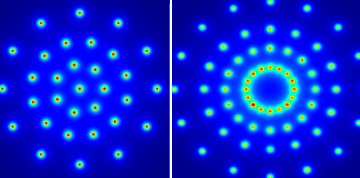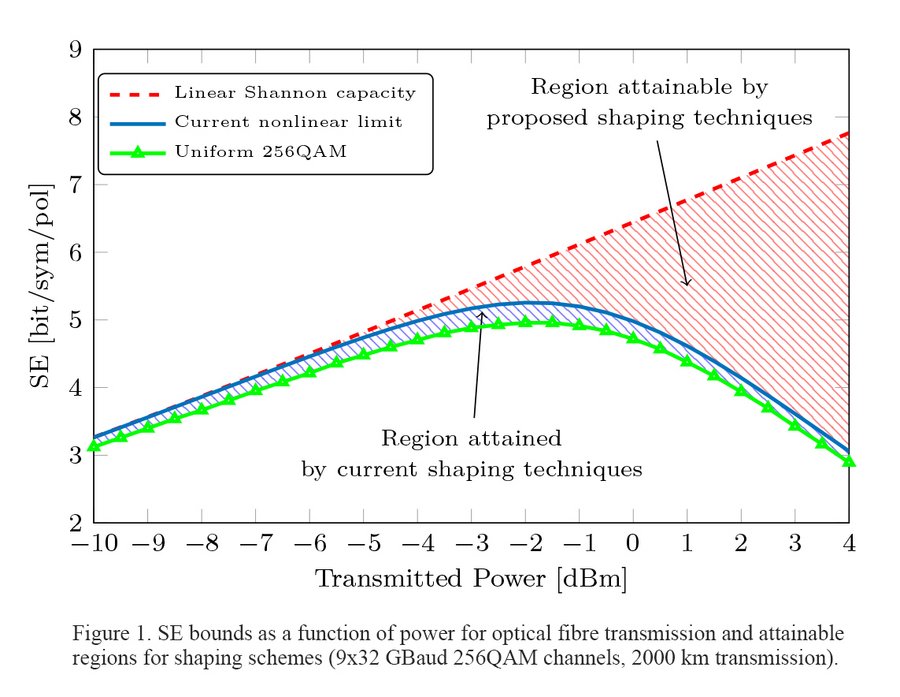Optical fibres nowadays play a vital role in the technological infrastructure underpinning the Internet. However, current optical fibre systems are showing clear signs of throughput saturation, due to the exhaustion of the available optical bandwidth. Next-generation optical transceivers are required to accommodate more data per second within the same spectral window. Therefore, high spectral-efficiency (SE) optical transceivers is today a key research area in optical fibre communications.

The main limitation to increasing SE of optical transmission is currently imposed by fibre nonlinear effects, which result in a signal distortion that grows with the transmitted power. As such, current state-of-the-art optical communication systems can be operated up to a maximum SE, as can be observed in Fig. 1 (blue and green curves). Over the last years, research has endeavoured to push upward this SE peak through the application of digital communication techniques such as multi-dimensional modulation formats, digital nonlinearity compensation, and, more recently, constellation shaping.
Constellation shaping is a technique mostly studied in linear channels, which consists in cleverly designing the transmitted symbols, i.e. the way data is encoded into waveforms. The goal of this project is to go beyond constellation shaping and introduce a more general signal shaping approach which is tailored to the nonlinear optical fibre channel. This will enable data rates beyond the state-of-the-art, reducing the gap to the fundamental nonlinear transmission limits.

Partners
